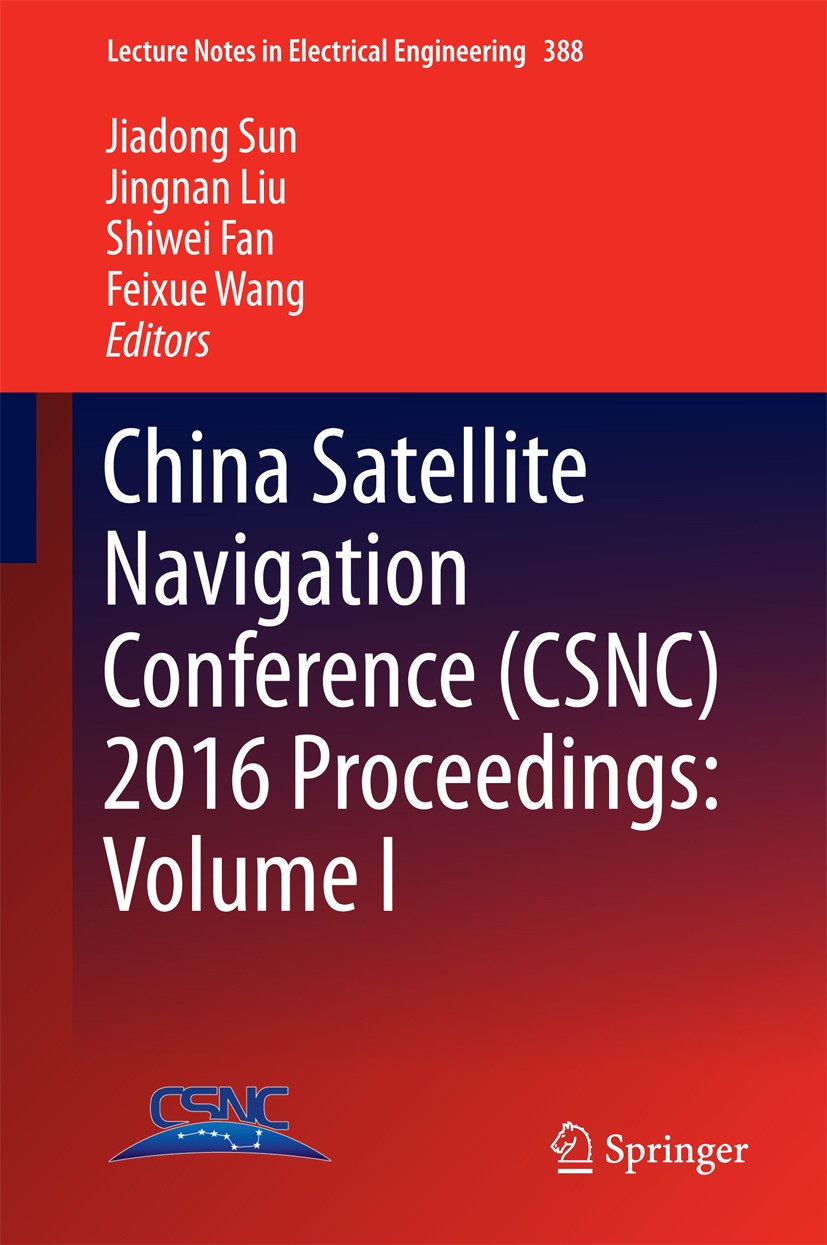| 书目名称 | China Satellite Navigation Conference (CSNC) 2016 Proceedings: Volume I |
| 编辑 | Jiadong Sun,Jingnan Liu,Feixue Wang |
| 视频video | http://file.papertrans.cn/226/225383/225383.mp4 |
| 概述 | Collects selected CSNC2016 papers.Showcases achievements and progress of BDS.Presents the latest studies of Global Navigation Satellite System in China.Covers hot topics in Global Navigation Satellite |
| 丛书名称 | Lecture Notes in Electrical Engineering |
| 图书封面 |  |
| 描述 | .TheseProceedings present selected research papers from CSNC2016, held during18th-20th May in Changsha, China. The theme of CSNC2016 is Smart Sensing, SmartPerception. These papers discuss the technologies and applications of theGlobal Navigation Satellite System (GNSS), and the latest progress made in theChina BeiDou System (BDS) especially. They are divided into 12 topics to matchthe corresponding sessions in CSNC2016, which broadly covered key topics inGNSS. Readers can learn about the BDS and keep abreast of the latest advancesin GNSS techniques and applications. . |
| 出版日期 | Conference proceedings 2016 |
| 关键词 | BeiDou System (BDS); CSNC2016; Chinese GNSS; Compass/BDS; GNSS |
| 版次 | 1 |
| doi | https://doi.org/10.1007/978-981-10-0934-1 |
| isbn_softcover | 978-981-10-9286-2 |
| isbn_ebook | 978-981-10-0934-1Series ISSN 1876-1100 Series E-ISSN 1876-1119 |
| issn_series | 1876-1100 |
| copyright | Springer Science+Business Media Singapore 2016 |
 |Archiver|手机版|小黑屋|
派博传思国际
( 京公网安备110108008328)
GMT+8, 2025-12-19 15:05
|Archiver|手机版|小黑屋|
派博传思国际
( 京公网安备110108008328)
GMT+8, 2025-12-19 15:05


